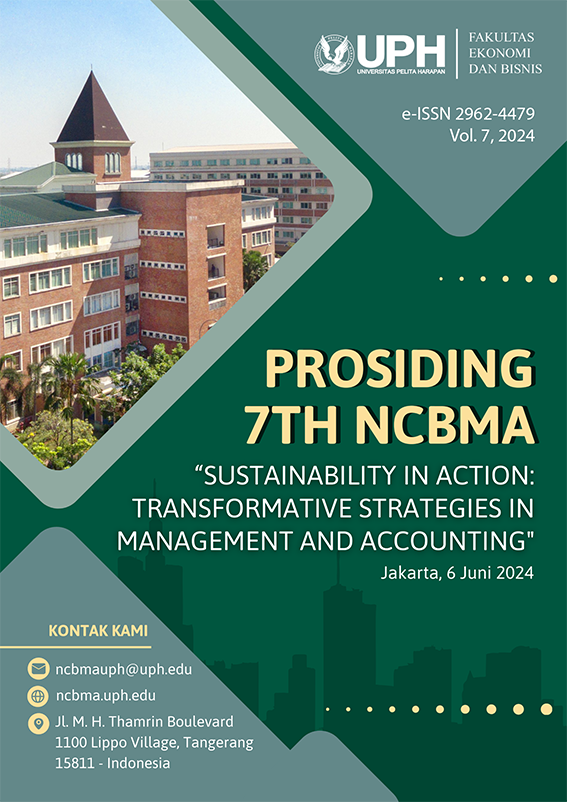ANALYSIS OF REGIONAL INEQUALITY IN THE PROVINCE OF MALUKU
Trefwoorden:
Inequality, Regional, Williamson Index, Maluku ProvinceSamenvatting
This study aims to determine the extent of regional inequality in Maluku Province, and to determine the factors that influence regional inequality such as population, education, health, regional labor. The analysis method used to see regional inequality is the Williamson Index. Meanwhile, Panel Data Regression is used to analyze the factors that influence inequality. Based on the results of the Williamson Index calculation, the inequality of Maluku Province is in the medium category at 0.45, the highest regional inequality is Aru Regency and Buru Regency. Furthermore, the results of Panel Regression with the fixed effect data model show that Population, Education, Health, Labor variables simultaneously affect regional inequality, while partially Population and Education have a positive effect at a significance level of α = 5% (95% confidence level). The coefficient of determination (R2) of 98% indicates that the specification of the regression model used is appropriate and has goodness of fit. Policy recommendations for overcoming inequality should prioritize human development, furthermore, to reduce regional inequality in Maluku Province, development is carried out in the areas of highest inequality, namely Aru Regency and Buru Regency.
Referenties
Adisasmita, R. (2005). Dasar-dasar Ekono-mi Wilayah. Graha Ilmu Yogyakarta.
Arsyad, L. (2002). Pengantar Perencanaan dan Pengembangan Ekonomi. BPFE-UGM, Yogyakarta.
Badan Pusat Statistik (BPS). Maluku Dalam Angka. 2012-2017.
Esmara, H. (1975). Regional Income Dispa-rities. Bulletin of Indonesia Econo-mic Studies. Vol. XI No. 1; 41-57.
Ivanovich, A. (2014). Ketimpangan Wilayah Dan Kebijakan Penangulangan Di Indonesia: kajian Isu strategis, Historis, dan paradigmatis Sejak Pra Kolonial. Diterbitkan atas Kerja Sama antara Departemen Sains Komunikasi dan Pengem-bangan Masyarakat Fakultas Eko-logi Manusia IPB dengan Yayasan Pustaka Bogor Indonesia. Bogor.
Jhingan, M. L. (2010). Ekonomi Pemba-ngunan dan Perencanaan. PT. RadjaGrafindo Persada. Jakarta.
Marisa dkk. (1999). Kesenjangan Penge-luaran Pembangunan Antar Wila-yah dan Provinsi di Indonesia. Buletin Ekonomi dan Keuangan Indonesia. Vol. 1. No. 4; 416-421.
Kuznets, S. (1966). Modern Economic Growth; Rate, Structure and Spread. CT: Yale University Press. New Heaven.
Sirojuzilam. (2008). Disparitas Ekonomi dan Perencanaan Regional : Ketimpang-an Ekonomi Wilayah Barat dan Wilayah Timur Provinsi Sumatera Utara. Pustaka bangsa. Medan.
Sjafrizal,(2008). Ekonomi Regional: Teori dan Aplikasi: Baduose Media. Padang
Tarigan, R. (2004). Ekonomi Regional; Teori dan Aplikasi. PT. Bumi Ak-sara. Jakarta.
Thee, K. W. (1980). Pembangunan Ekonomi dan Pemerataan; Konsep dan Teori Distribusi Pendapatan dan Peme-rataan Pembangunan. LP3S. Jakar-ta.
Todaro,M.P dan Smith, S.C. (2011). Pembangunan Ekonomi di Dunia Ketiga, Erlangga, Jakarta.
Wibisono, Y. (2005). Sumber-sumber Pertumbuhan Ekonomi Regional; Studi Empiris Antar Provinsi di Indonesia. Jurnal Ekonomi dan Pembangunan Indonesia. Vol 5. No. 91-120.
Williamson, J. G. (1965). Regional Inequa-litied and the Process of National development; a Descrep-tion of the Pattern. In: Friedman, J. Alonso, W. (eds) Regional Policy. The MIT Press. Cambridge Massachusetts.
##submission.downloads##
Gepubliceerd
Nummer
Sectie
Licentie
Copyright (c) 2024 Leroy Samy Uguy, Esther Kembauw, Anrey P. Kakisina, Marthina G. I. Kembauw

Dit werk wordt verdeeld onder een Naamsvermelding-GelijkDelen 4.0 Internationaal licentie.

